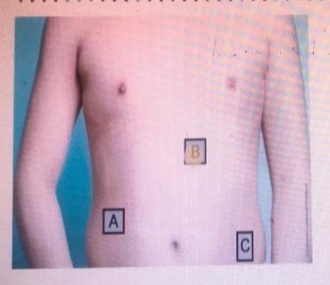ATI RN
ATI RN Adult Medical Surgical 2023 Questions Questions
Extract:
Question 1 of 4
A nurse is caring for a client who is postoperative following a below-the-knee amputation. Which of the following statements made by the client indicates acceptance of their altered body image?
Correct Answer: A
Rationale: The correct answer is A because the statement indicates the client's willingness to connect with someone who has undergone a similar experience, showing acceptance and readiness to learn from others in similar situations. This demonstrates the client's acknowledgment of their altered body image and a proactive approach towards coping with it positively.
Choice B reflects avoidance behavior, not acceptance.
Choice C focuses on the relief of pain rather than acceptance of body image changes.
Choice D suggests resignation rather than acceptance.
Question 2 of 4
A nurse is caring for a client who has left-sided heart failure. Which of the following findings should indicate to the nurse that the client is experiencing a decrease in cardiac output?
Correct Answer: D
Rationale: The correct answer is D: Dyspnea. In left-sided heart failure, the heart is unable to pump efficiently, leading to a decrease in cardiac output. Dyspnea (shortness of breath) occurs due to the accumulation of fluid in the lungs (pulmonary congestion), indicating decreased cardiac output. Weight gain (
A) and distended abdomen (
B) are more indicative of right-sided heart failure. Confusion (
C) can be a sign of decreased cerebral perfusion, but dyspnea is a more direct indicator of decreased cardiac output in left-sided heart failure.
Question 3 of 4
A nurse is admitting a client who has arthritic pain and reports taking ibuprofen several times daily for 3 years. Which of the following tests should the nurse monitor?
Correct Answer: B
Rationale: The correct answer is B: Stool for occult blood. Ibuprofen is a nonsteroidal anti-inflammatory drug (NSAI
D) that can cause gastrointestinal bleeding, leading to occult blood in the stool. Monitoring stool for occult blood helps in detecting any gastrointestinal bleeding early. Serum calcium (
A) is not typically affected by long-term ibuprofen use. Fasting blood glucose (
C) is not directly related to ibuprofen use. Urine for white blood cells (
D) is not relevant in this scenario.
Extract:
Medical History: Cerebrovascular accident (CVA) 2 years ago, Coronary artery disease, Hypertension, Hyperlipidemia. A nurse is reviewing the client's medical record. After reviewing the medical history, the nurse must determine which of the following actions to take.
Question 4 of 4
For each potential provider’s prescription, the nurse must select if the action is Anticipated, Nonessential, or Contraindicated for the client.
| Potential Prescription | Anticipated | Non-essential | Contraindicated |
|---|---|---|---|
| Encourage the client to cough | |||
| Elevate the head of the bed | |||
| Assist the client to the bathroom | |||
| Decrease oxygen to 1.5 L/min via nasal cannula | |||
| Keep the client’s head in a midline position | |||
| Initiate seizure precautions |
Correct Answer: B, A, C, A
Rationale: The correct answer is based on the rationale below:
1. Elevate the head of the bed (
B): This action is Anticipated as it helps prevent aspiration and promotes optimal respiratory function.
2. Encourage the client to cough (
A): Also Anticipated as coughing helps clear secretions and maintain airway patency.
3. Assist the client to the bathroom (
C): This is Non-essential unless there are specific concerns about the client's mobility or urgency.
4. Decrease oxygen to 1.5 L/min via nasal cannula (
A): Contraindicated as it may compromise oxygenation, especially without proper assessment and orders.
Other choices:
- Keeping the client's head in a midline position (E) is not provided in the question stem, so it cannot be evaluated.
- Initiating seizure precautions (F) is not relevant to the client's immediate care based on the information given
Extract:
Question 5 of 4
A nurse is preparing to receive a client from surgery following a transverse colon resection with colostomy placement. The nurse should expect to assess the stoma at which of the following locations? (You will find hot spots to select in the artwork below. Select only the hot spot that corresponds to your answer.)

Correct Answer:
Rationale:
Correct
Answer: B
Rationale: The correct location to assess the stoma following a transverse colon resection with colostomy placement is at location B, which is in the left lower quadrant. This is because the transverse colon is typically located in the upper abdomen, and the stoma would be brought out at the most dependent portion of the colon, which is in the left lower quadrant. Assessing the stoma in this location allows the nurse to monitor for proper stoma function and potential complications.
Summary:
A: Incorrect - Location A is in the right upper quadrant, which is not the typical site for a stoma following a transverse colon resection.
C: Incorrect - Location C is in the left upper quadrant, which is also not the typical site for a stoma after this surgery.
D, E, F, G: Not applicable as they are not relevant to the question.
